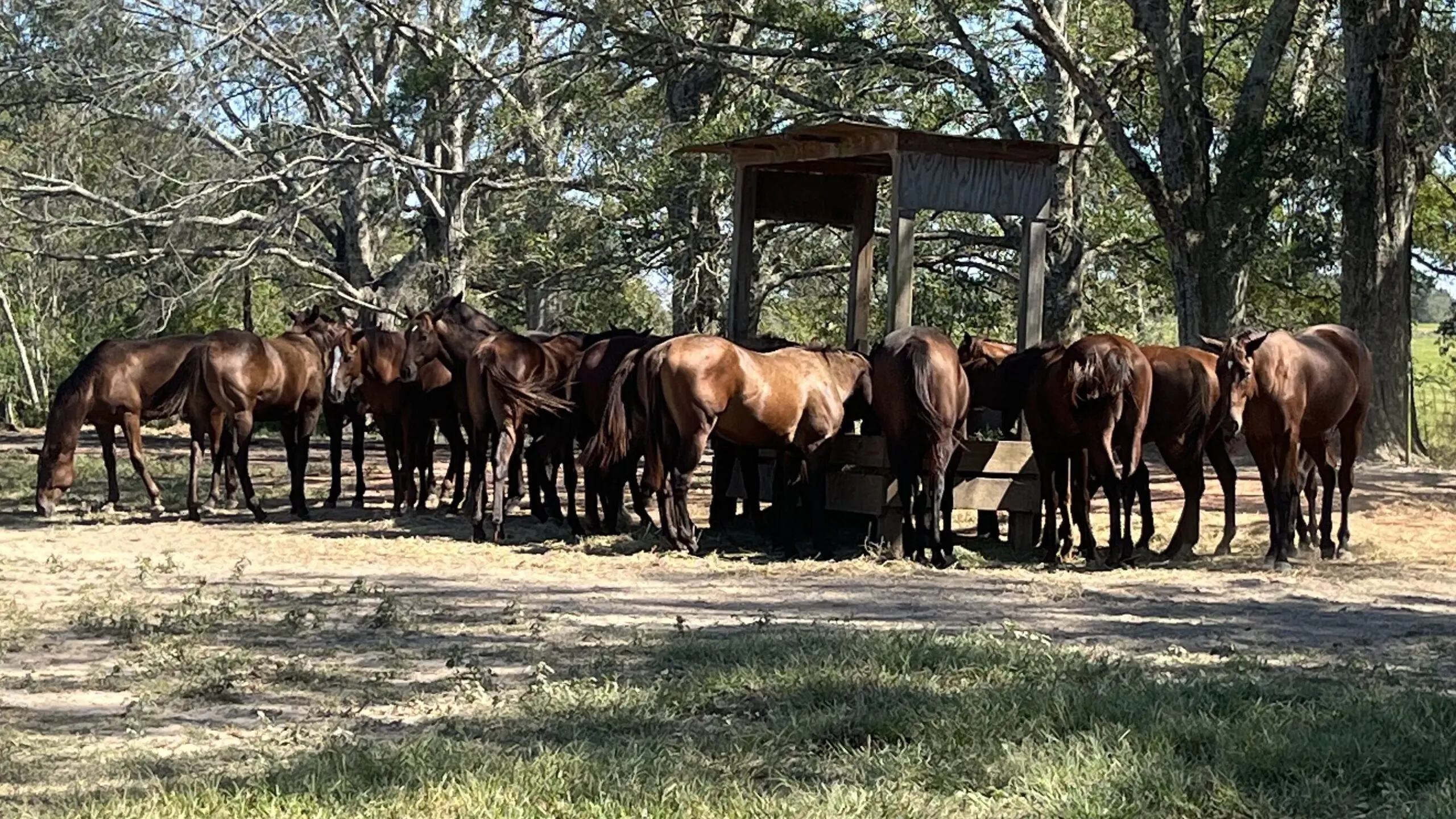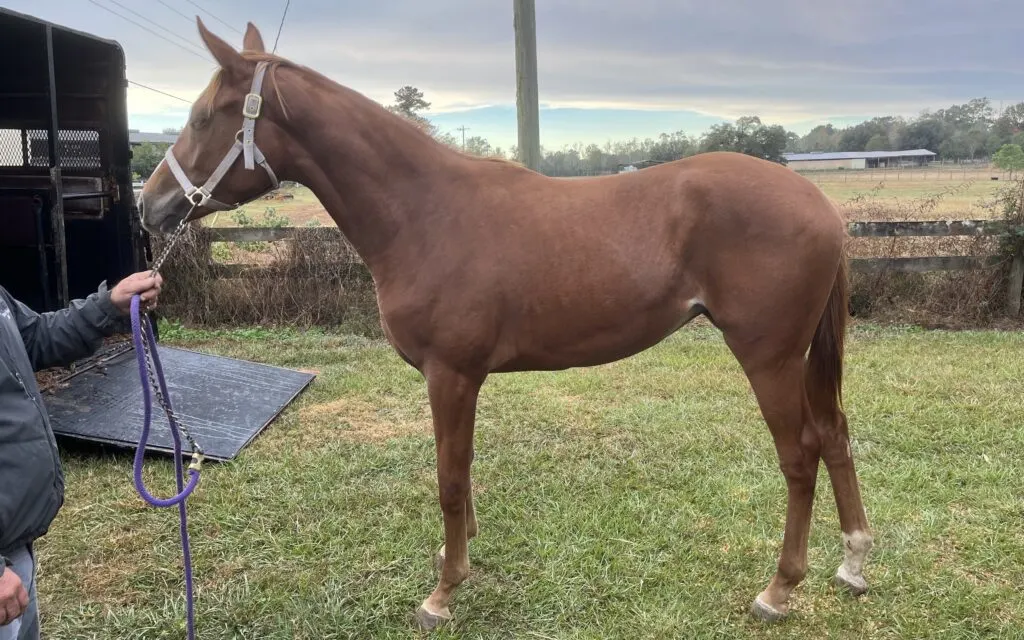Last updated: December 8, 2023
From Secretariat to Black Caviar, racehorse names have long captured the imaginations of spectators and enthusiasts alike. These monikers are more than just mere labels; they represent the horse’s unique identity, legacy, and prowess on the track. The art of naming a racehorse is a fascinating process steeped in history, rules, and creativity.
Racehorses get their names through a blend of tradition, lineage, and inspiration from various sources, all while adhering to strict naming guidelines set by governing bodies like The Jockey Club. The name must be unique, memorable, and inoffensive to ensure it stands out in the racing world.
As you delve into the world of racehorse naming, you’ll discover the intriguing history behind some of the most iconic names, the strict rules that govern this process, and the cherished traditions that shape each horse’s identity. Join us as we explore the art and science behind these captivating names, and learn what sets them apart.
Origins of Racehorse Names
The history of naming racehorses can be traced back centuries, with the practice evolving over time to reflect societal changes and cultural influences. In the early days of horse racing, names were often simplistic and descriptive, reflecting a horse’s physical appearance or lineage.
As the sport gained popularity, naming conventions shifted, incorporating more creative and memorable choices that resonated with fans and participants alike. Some of the most famous racehorses in history have boasted iconic names that stand the test of time.
For instance, Secretariat, often regarded as one of the greatest racehorses of all time, was named after a word meaning a confidential assistant or advisor. Man o’ War, another legendary thoroughbred, was named to honor his owner’s World War I service.
Another intriguing example is Seabiscuit, named after his sire, Hard Tack, and his dam, Swing On, which together inspired a playful reference to a type of dense, dry biscuit consumed by sailors. The stories behind these names reveal the thought and care that goes into selecting a racehorse’s name.
Owners often draw inspiration from a horse’s ancestry, appearance, or personality, as well as from their own interests, experiences, and even sense of humor. As we explore the rules and traditions surrounding racehorse naming, you’ll gain a deeper appreciation for the creativity and emotion that these names represent.

Rules and Regulations for Naming Racehorses
Governing bodies play a crucial role in ensuring racehorse names adhere to specific guidelines, fostering a sense of order and respect within the racing community. One such organization is The Jockey Club, which oversees thoroughbred naming in the United States, Canada, and Puerto Rico.
Their role includes setting and enforcing the rules for naming racehorses, as well as maintaining a registry of approved names. The general rules for naming racehorses cover several key aspects. Firstly, there is a character limit, which is typically set at 18 characters, including spaces and punctuation.
This helps keep names concise and easy to remember. Secondly, each name must be unique, ensuring that no two racehorses share the same moniker. Thirdly, names should not be offensive or in poor taste, as they should uphold the dignity and respectability of the sport.
Lastly, there are restrictions on using names of famous horses or those that have already achieved significant success in the racing world. This rule prevents confusion and preserves the legacy of renowned racehorses.
The process for name approval and registration involves submitting a proposed name to the governing body, such as The Jockey Club. Owners often submit multiple name choices in case their top pick is already in use or fails to meet the guidelines. Once a name is approved, it is registered and becomes the official moniker for that racehorse, forever etched in the annals of horse racing history.

Traditions and Common Themes in Racehorse Names
Lineage and bloodline naming is a long-standing tradition in racehorse naming. Many owners choose to honor their horse’s sire and dam by incorporating elements of their names into the offspring’s moniker.
For example, the famous racehorse Sunday Silence was sired by Halo and out of the dam Wishing Well, which combines the religious theme of the sire’s name and the idea of silence often associated with sacred spaces. Another example is the legendary mare Zenyatta, named after the 1980 album “Zenyatta Mondatta” by the British rock band The Police.
The horse’s owner, Jerry Moss, co-founded A&M Records and signed The Police, making a significant amount of money from the band’s success. Naming the horse Zenyatta was a tribute to the album and the band’s impact on Moss’s career.
Location and regional influences also play a significant role in racehorse naming. Names that reflect a horse’s birthplace, the owner’s hometown, or a region’s landmarks and cultural heritage are quite popular.
For instance, the Kentucky Derby winner California Chrome was named in honor of his home state, while the celebrated Australian racehorse Phar Lap, which means “lightning” in Thai, was named after his New Zealand birthplace’s connection to Asia.
Pop culture, mythology, and history offer a wealth of inspiration for racehorse names. Seattle Slew was indeed named for the city of Seattle, but the “slew” part of his name is derived from the term “slough,” which refers to a swamp or marshy area.
The name was chosen by the horse’s co-owner, Karen Taylor, who wanted to pay tribute to her husband’s home city and found inspiration in the swampy landscape of the Pacific Northwest.
The legendary Australian mare Makybe Diva was named after her owner’s employees, using the first two letters of their names (Maureen, Kylie, Belinda, and Diane). Mythology also plays a part in names like Pegasus, a winged divine horse in Greek mythology.
Wordplay and humor often come into play when naming racehorses. Puns, alliterations, and clever phrases can make a name memorable and endearing. For example, the horse Hasty Pudding was named as a playful nod to a traditional British dessert, while Zippy Chippy, a famously slow racehorse, was given a name that humorously belied his lack of speed.
Alliteration can also be found in names like Funny Cide and Candy Ride, which use repetition to create a catchy and memorable moniker. As you can see, racehorse naming is an art form that combines tradition, creativity, and personal significance. The end result is a diverse array of names that capture the unique spirit of each horse and the rich history of the sport.

Tips for Choosing a Racehorse Name
Choosing the perfect name for your racehorse can be both exciting and challenging. To help guide you through this process, here are a few tips to consider:
A. Balancing creativity and rule compliance is essential when selecting a racehorse name. While you’ll want to create a memorable and unique name, it’s important to adhere to the guidelines set by the governing body. Remember the character limit, ensure the name’s uniqueness, and avoid anything offensive or in poor taste.
B. Consider the horse’s personality, appearance, or quirks when brainstorming names. Observing your horse’s behavior, physical attributes, or unique characteristics can inspire a name that reflects their individuality. For example, a horse with a playful demeanor might suit a lighthearted name, while a striking coat color could inspire a name that highlights this feature.
C. Involving friends, family, or even the public in the naming process can be a fun and rewarding experience. Collaborating with others can generate fresh ideas and provide diverse perspectives, making it easier to find the perfect name. Some owners have even turned to social media or conducted naming contests to engage the public and gather a wide array of suggestions.
By keeping these tips in mind, you’ll be well on your way to choosing a name that not only follows the rules and traditions of racehorse naming but also captures the unique essence of your horse, ensuring they stand out on the racetrack and in the hearts of fans.
Conclusion: How Racehorses Get Their Names
Racehorse naming is a fascinating blend of history, rules, traditions, and creativity. From honoring a horse’s lineage to drawing inspiration from pop culture and mythology, the names chosen for these fascinating animals embody their unique personalities and the rich heritage of the sport.
As you now have a deeper understanding of the origins, guidelines, and stories behind racehorse names, you can fully appreciate the artistry and significance of these captivating monikers. Whether you’re an owner choosing a name for your own racehorse or a fan admiring the names of your favorite thoroughbreds, the world of racehorse naming offers endless intrigue and inspiration.
